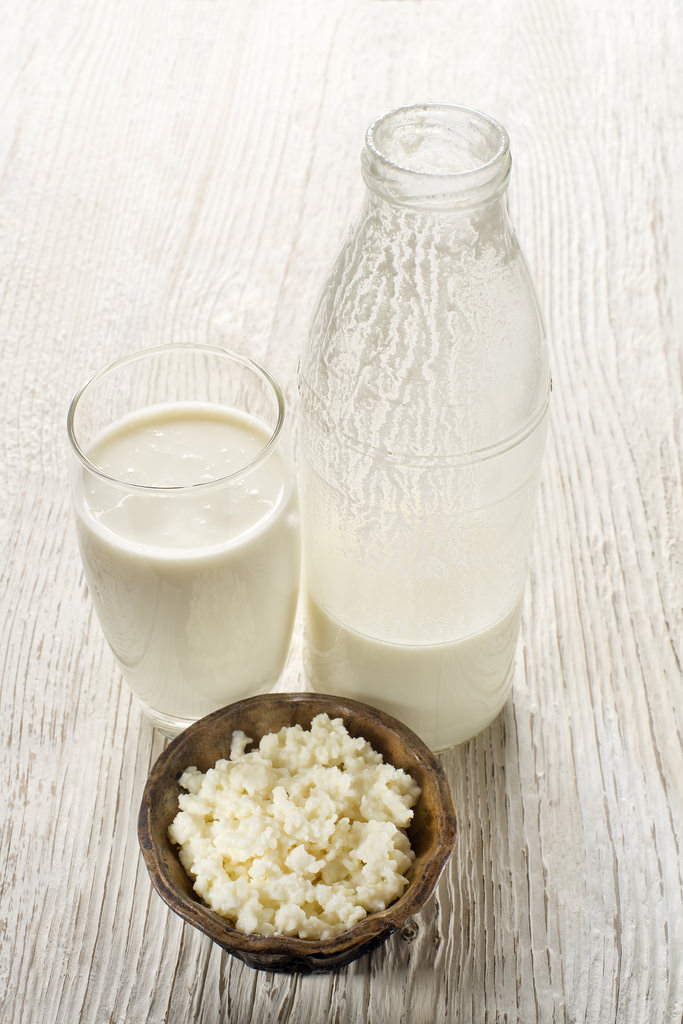Milk Kefir Video Recipe
Milk Kefir is a fermented milk drink made with kefir grains.
The term “kefir grains” describes the look of the culture only – there are no actual “grains” in the culture. Kefir grains consist of bacteria and yeast.
Milk Kefir can be made from any type of animal milk, coconut, rice or soy milk. The natural environment for this type of bacteria is dairy, hence you want to keep your kefir grain in dairy every now and then, even if you use it for nut milk fermentation. The result will be a tart flavoured refreshing flavour that is similar to natural drinking-style yogurt.
This fermented drink is packed with probiotic bacteria benefits, with valuable vitamins and minerals, and contains easily digestible complete proteins.
The kefir’s abundance of beneficial yeast and bacteria produce lactase, which is an enzyme that consumes most of the lactose left after the culturing process. So, milk Kefir should be suitable for those who are lactose intolerant.
I have shared a video demonstration for making Milk Kefir, and I have shared with you my recipe.
Ingredients
- Use a 500-millilitre glass jar
- About 1 tablespoon of kefir culture (kefir grain)
- 350 millilitres fresh cow, goat or sheep milk
Method
- Put the kefir culture in the glass jar and then pour in the fresh milk until the jar is about two-thirds or so full. Cover the jar with a cloth. (If you use a lid, ensure that the jar is no more than two-thirds full, or use a jar with a rubber gasket that will let any pressure escape.)
- Let the contents stand at room temperature for approximately 24 hours, depending on your taste – kefir that has stood for 12 hours will be thinner and sweeter; kefir that has stood for 48 hours will be thicker and more sour. (Note that the temperature will affect how quickly the culture works. During warm summer months, the kefir will ferment faster).
- When it’s ready, strain the kefir into a clean jar. While the mixture is fermenting, the kefir grains will float to the top of the milk along with any cream. It’s a good idea to stir the solution gently with a wooden spoon to mix up the solids and liquids, making it easier to strain. Or you can use a wooden spoon or clean hands to scoop out the culture (it is easy to feel and separate from the liquids). The kefir culture produces a jelly-like polysaccharide substance that develops around the grains as they grow, making it look ‘gloopy’. This substance has unique properties and it’s own name: kefiran. Giving the kefir a good stir will distribute the kefiran, which will contribute to the thickness of the finished kefir. (The amount of kefiran seems to vary a lot, with some strains producing a lot and others not very much.)
- After you have strained the mixture, the grains should be placed straight back into a clean jar without washing them first. Fresh milk is added to the grains to make the next batch.



